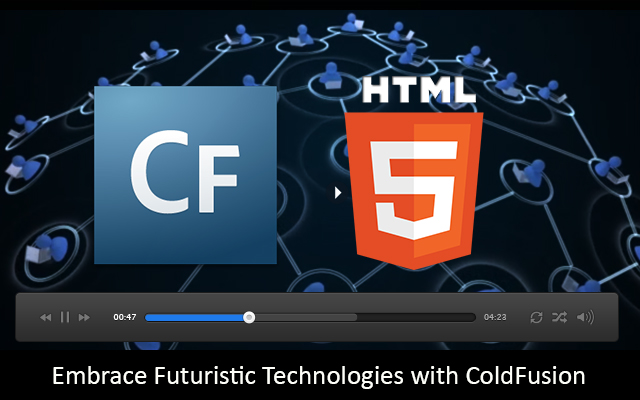Embrace Futuristic Technologies with ColdFusion
 Developers across the world look for easy, quick and smart ways to develop dynamic and interactive web applications. That is why; most programmers use custom tools and server-side technology to build complex, dynamic and interactive enterprise web applications without writing longer lines of code. Since its release it 2012, ColdFusion 10 has become hugely popular among developers as a Java EE-based platform to develop enterprise-ready internet applications.
Developers across the world look for easy, quick and smart ways to develop dynamic and interactive web applications. That is why; most programmers use custom tools and server-side technology to build complex, dynamic and interactive enterprise web applications without writing longer lines of code. Since its release it 2012, ColdFusion 10 has become hugely popular among developers as a Java EE-based platform to develop enterprise-ready internet applications.
Adobe has further made the latest version of ColdFusion ready to meet the current technological trends by incorporating features like enhanced support for web services and built-in support for HTML5. At the same time, ColdFusion 10 still enables programmers to build applications using CMFL. As a tag-based language, CMFL uses a syntax that is almost identical to HTML and XML.
So each programmer can easily learn the language, and start building rich internet applications within a very short timeframe. A number of features like XML processing, ColdFusion components (CFCs), integrated debugging, and Java and .NET integration makes ColdFusion 10 a powerful platform to develop a variety of dynamic websites and internet application. Adobe has further included a set of features that enables programmers to embrace futuristic technologies with ColdFusion 10.
ColdFusion Features that Allow You to Embrace New Technologies
- HTML5 WebSocket Protocol: The frequent changes in the choice of users have made it essential for developers to build web applications that work with dynamic data. Some of the conventional protocols did not allow programmers to transfer dynamic data from the server to the client. ColdFusion 10 overcomes the limitation by supporting the WebSocket protocol on the web server. You can use this features to develop robust web applications that work with dynamic data. Further, you can easily subscribe to or publish multiple channels using a messaging infrastructure built based on raw WebSockets.
- HTML5 Charting: Each developer wants to include smart client-side charts to make his web application more dynamic and interactive. The latest version of ColdFusion supports interactive client-side charts through the ColdFusion CFCHART tag. The charting facility is developed based on Flash, SVG, and Canvas. So you can use the feature to incorporate a variety of client-side charts by fetching values from a query to suit the requirements of your web application. At the same time, you also have options to customize the styles of client-side charts by using the JSON objects.
- Revamped Video Players: The popularity of a web application depends on the way it provides information to the users. In comparison to text and images, video clips are more effective in keeping the users interested and engaged. ColdFusion 10 allows web application developers to avail advantages of multiple video players using the JavaScript APIs. You can use the CFMEDIAPLAYER tag to use the built-in HTML5 video player provided by the platform. At the same time, you also have option to use the existing Flash video player with the CFMEDIAPLAYER tag. Both video players look and work in an identical way. Also, you can access the Flash and HTML5 versions of the video player using the same JavaScript APIs.
- Support for RESTful Web Services: Most developers love RESTful web services due to their simple and easy-to-use features. Further, the web services can be accessed over both HTTP and HTTPs. ColdFusion 10 supports RESTful web services that enable you to you transform your ColdFusion Component (CFC) into a RESTful Web Service simply by specifying certain attributes. You have to start the process by setting the rest attribute as true inside the CFC. Also, you have to add value to the restpath attribute to specify the path of the services to be accessed over HTTP. You can even associate a HTTP method to each function in the CFC to invoke the function as part of the web services.
- Enterprise Web Services Support through a Revamped Engine: The complex web applications often require developers to publish the web service using advanced protocols. The revamped AXIS 2 engine provided by ColdFusion 10 makes it easier for you to use the advantages of SOAP1.2, WSDL 2.0, and document literal wrapped style. You can access these advanced protocols to publish your web services based on the need of the web application. Also, Adobe has incorporated backward compatibility to the feature to support the conventional way of publishing web services.
These futuristic technologies further make it easier for developers to meet the current trends in ColdFusion application development.
We provide ColdFusion web development services. If you would like to know more about our expert ColdFusion developers, please get in touch with us at Mindfire Solutions.